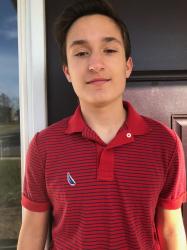Here’s toward understanding the motives behind the standstill.
It’s early September. Attention has shifted from the always exciting NBA offseason to the preparation of the NFL season.
All of that seems fine. Except, we’re missing something.
Usually, during this time, all notable free agents in the NBA have been picked up or at least signed to partially guaranteed deals. But not all of those players have been signed.
The most notable player that’s still unsigned is shooting guard Rodney Hood. Hood hasn’t had any rumors swirling around his name since free agency starting July 1. No teams have budged at the 6’8” guard.
Today, I’m going to explain why.
The Contract
Before we go begin, we must address the elephant in the room, namely, Hood’s contract.
Hood has been under restricted free agency this offseason. The team he was traded to at last year’s deadline, the Cleveland Cavaliers, were able to maintain his bird rights from the Utah Jazz. That means a team cannot sign Hood completely … at first. They must first agree with a deal, then wait for the team’s bird rights holder–the Cavs–to match that offer within two days. If the team decides to match, then they retain that player for that amount of money. We saw this happen when the Bulls matched the Kings offer of 4-years $78 million for guard Zach Lavine.
However, if the team doesn’t decide to match that offer due to schematical and monetary factors, then the team who offered the initial contract gets the player. This occurred last year when the Knicks were able to sign Tim Hardaway Jr. even though he was a restricted free agent with the Atlanta Hawks.
Of course, the other way is for the team who has the bird rights to sign that player come free agency.
This tension between “who bites first” at a player has gotten too severe for Hood in this case.
It seems as if the Cavs are just waiting for another team to sign Hood before they match it the offer.
If nothing happens between now and the start of the regular season, then expect this situation to be similar to the Nerlens Noel’s plight last year when he was forced to sign a qualifying sheet with the Dallas Mavericks. That forces a player to be signed with the bird rights’ team, but it also opens up the gates as he becomes an unrestricted free agent the following offseason.
Offensive Mindset
On an individual level, one of the weaknesses in Hood’s game is the way he carries out the offense. At 6’8”, you would expect a player with his size–especially at the much smaller shooting guard spot–to be at least competent sharing the basketball. But Hood’s game doesn’t do that. His career assists per game are only two.
As a result of the lack of facilitating, he has heavily favored his shooting ability. As mentioned before, his height advantage gives him a clear advantage over his opponents in terms of seeing over the opponent one-on-one.
Well, he may be overusing that narrative. As a career third option of his team, Hood has managed to hoist up an astonishing 5.1 threes per game. That’s off his average of 6.1 total field goal attempts per game, which really says something. Statistically, he managed to attempt only one two-point attempt per game.
I don’t care if this is the modern NBA, a player shouldn’t be this reliant on the three-point shot. These barrages of shooting nights have caused Hood to be a “streaky shooter.”
Here’s a graphic to show you his true shooting woes.
Overall Defense
Hood is one of the worst wing defenders in the NBA. You would think his size that he would be able to at least be average on the defensive end. But, he isn’t.
Maybe that’s due to his other measurements. At 206 pounds, he is nowhere near the size of having the body to withstand the pressure of interior defense by opposing bigs if he gets switched onto them.
Another measurement that surprised me was his wingspan. Hood as the same amount of wingspan as his height. That’s rarely seen in the NBA anymore: the average league player’s wingspan is two inches more than his height. You may think that Hood only having two inches less on his wingspan is no big deal, but it is. The lack of arm size limits his ability to lock down perimeter players while also causing fewer opportunities for blocks.
Statistically speaking, his defense is atrocious. He has been a career -1.2 in defensive plus-minus. He also has a history of foul trouble–posting a career average of three calls per night, while averaging four his rookie year.
So The Skinny Is ….
It’s clear why Rodney Hood hasn’t been signed. As I speculated earlier in this piece, I think the likely scenario is that he’ll accept the Cavaliers qualifying offer in the next few weeks and become an unrestricted free agent next summer.
Here’s hoping that Hood bounces back from this.
















